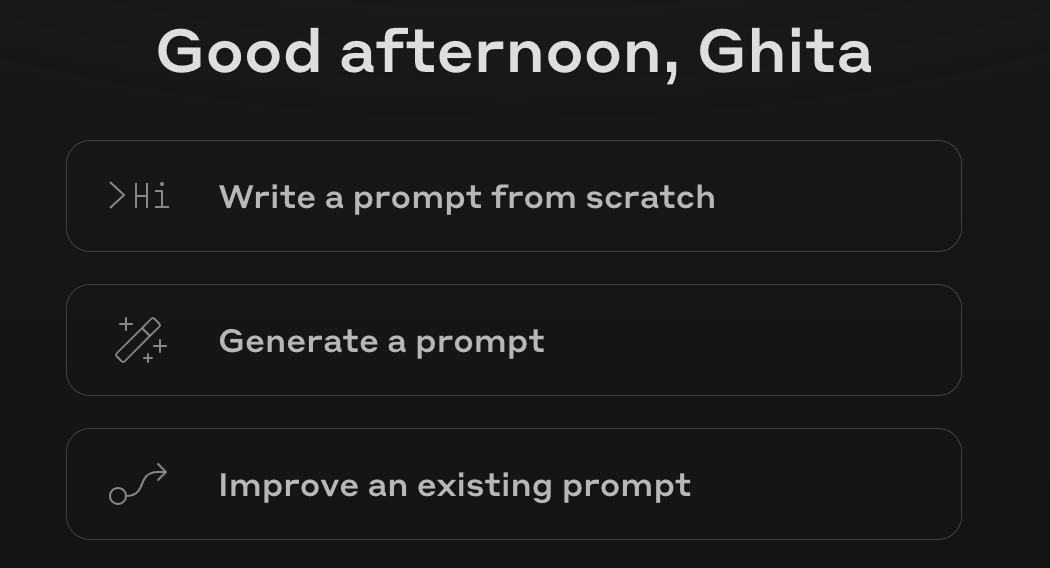Key General Concepts of Advanced Prompting
1. Understand the AI Model’s Behavior
👉AI models respond better to clear, structured, and context-rich prompts.
👉Models like Claude (by Anthropic) emphasize ethical and instructive outputs.
2. Establish Context Early
-Context frames the AI’s understanding.
Example:
- Poor Prompt: “Summarize this.”
- Effective Prompt: “Summarize the following technical document into three bullet points suitable for a novice audience.”
3. Be Explicit with Instructions
Specify the tone, format, and depth of the response.
Example:
- General: “Explain photosynthesis.”
- Advanced: “Explain photosynthesis to a 10-year-old using a playful tone and three analogies.”
4. Iterative Refinement
Test and refine prompts based on outputs.
Techniques like “few-shot prompting” (providing examples) improve accuracy.
Anthropic: Structuring Ethical Prompts
According to🔗Anthropic’s Prompt Engineering Overview🔗:
1- Use Explicit Roles: Assign roles to guide behavior.
Example:
“You are a historian specializing in ancient Egypt. Answer the following question...”
2- Chain of Thought Prompting: Encourage step-by-step reasoning.
Example:
“Explain why the sky is blue. Break the explanation into three steps: the atmosphere’s composition, light scattering, and human perception.”
3- Avoid Ambiguity:
Use clear, unambiguous language to prevent unintended outputs.
Prompt Library and Generator: 🔗Anthropic’s Console provides a Prompt Library with ready-to-use examples and a Prompt Generator to customize and test prompts.
Cohere: Leveraging Multimodal and Complex Scenarios
Cohere’s 🔗Advanced Prompt Engineering Techniques highlight:
Prompt Chunking:
Divide complex instructions into manageable parts.
Example:
“First, summarize the article. Then, list three key points for a business pitch.”
Dynamic Prompting:
Incorporate variables or placeholders to adapt prompts dynamically.
Example:
Template: “Summarize the content of {input_document} for an audience of {audience_type}.”
Multimodal Inputs:
Use text alongside images or data for richer interactions.
LangGraph: Adaptive Retrieval and Grounding
🔗LangGraph’s Adaptive RAG Local Tutorial focuses on:
Retrieval-Augmented Generation (RAG):
Combine AI outputs with external data sources for factual grounding.
Example:
“Using the data retrieved from this database, generate a summary...”
Adaptive Memory:
Use historical interaction context to enhance outputs.
Example:
“Based on our previous conversation about renewable energy, expand on solar panel efficiency.”
Data-Driven Prompts:
Pre-fetch relevant information to enrich the AI’s response.
🔗MUST WATCH Youtube Tutorials 👉 Here🔗
OpenAI: Few-Shot Learning and Fine-Tuning
OpenAI’s techniques emphasize:
Few-Shot Examples:
Provide 2-5 examples to set expectations.
Example:
Prompt: “Translate the following into French:
Hello – Bonjour
Good morning – Bon matin
Thank you – ...”
System Messages:
Use initial instructions to define AI behavior.
Example:
“You are a helpful assistant who simplifies complex topics.”
Temperature Control:
Adjust creativity by modifying temperature parameters.
Example:
Low Temperature (factual): “Explain gravity scientifically.”
High Temperature (creative): “Describe gravity as a superhero power.”
Google Vertex AI: Prompt Design
Google Vertex AI is a platform designed to build and deploy machine learning models, offering robust tools for generative AI. Its 🔗Introduction to Prompt Design focuses on creating effective prompts for its generative models. Unlike Google's Gemini AI, which is tailored for multimodal capabilities (text, images, and code) and deeply integrated contextual adaptability, Vertex AI emphasizes structured text-based interactions with scalable deployment for enterprise use cases. Key techniques include:
Iterative Prompt Testing:
Experiment with multiple versions of a prompt to refine clarity and effectiveness.
Example:
Initial Prompt: “Describe renewable energy.”
Refined Prompt: “List three types of renewable energy, their benefits, and real-world examples.”
Context Setting:
Provide detailed background information to guide responses.
Example:
“Imagine you are an environmental scientist. Explain how wind turbines work to a high school student.”
Instruction Tuning:
Use specific instructions to achieve desired outcomes.
Example:
“Generate a detailed technical summary of the following article in bullet points.”
Output Constraints:
Define the format and scope of the output.
Example:
“Write a 100-word summary of the provided text.”
Fine-Grained Feedback:
Provide explicit feedback to refine AI responses.
Example:
“Focus more on environmental impacts and less on economic factors in your explanation.”
Practical Examples to Combine Techniques
Role + Few-Shot Prompting:
Prompt: “You are a financial advisor. Analyze the following scenarios:
A client invests $10,000 in stocks.
A client saves $500 monthly. Provide detailed advice for each.”
Chain of Thought + RAG:
Prompt: “Retrieve information about the top 5 renewable energy sources and explain their efficiency step-by-step.”
Dynamic + Temperature Control:
Prompt: “Generate a detailed but creative advertisement for {product_name}, targeting {audience}.”
To test output of different models:
🔗OpenRouter: A paid tool that allows you to route prompts across multiple LLMs and compare their outputs efficiently.
🔗Chatbot Arena (formerly LMSYS): Free AI Chat to Compare & Test Best AI Chatbots
